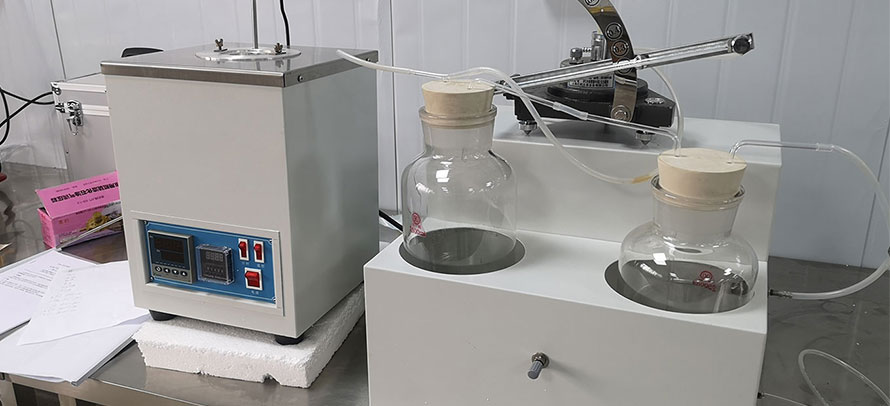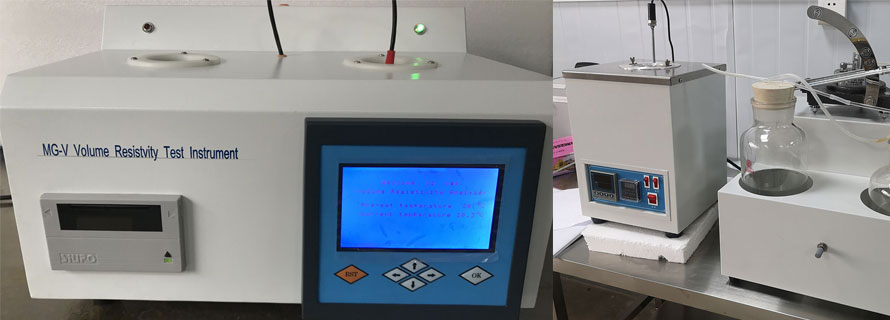A1.1 The homogenization efficiency of each unknown mixer must be evaluated before use. To evaluate the mixer, confirm that the expected water content can be obtained by the Karl Fischer titration, following the addition of a known amount of water to a nominally dry crude and the homogenization of this mixture. This procedure for checking the homogenization efficiency of a mixer is based upon the use of a 500-mL sample container; however, a similar procedure must be followed for the different sample sizes that may be received in a particular laboratory.
A1.2 Weigh the 500-mL sample container to the nearest 0.01 g. Fill the container to about 80 % with the dry crude (less than 0.1 mass % water). Insert the mixer shaft into the container so that the head is about 5 mm from the container bottom. Homogenize the contents of the container at 80 % power for 2 min, take test aliquot of the resulting emulsion, and determine its water content in duplicate, as described in Test Method D 4377 or D 4928. Obtain the average of the duplicate results, and designate this as the inherent water content.
A1.3 Weigh the crude and container to the nearest 0.01 g. Record the temperature of the oil to the nearest 1°C. Immerse the mixer in the crude as in A1.2. Using a Grade A pipette, transfer 15 mL of water to the contents of the container. Homogenize the oil and water at 80 % power for 2 min. Record the temperature of the emulsion immediately after homogenization. The rise in temperature during homogenization should not exceed 10°C; otherwise, loss of water can occur and the emulsion can be destabilized. Determine the water content of the crude immediately after mixing. Sample the crude just below the liquid level.
A1.4 Without additionally mixing the crude, determine the water content (single determination) of the crude 15 and 30 min after the initial mixing in A1.3.
A1.5 The water contents (added plus inherent) of these three portions (immediately, 15 and 30 min after homogenization) shall agree within 0.10 % absolute of each other and within 0.10 % of the calculated water content (that is, added plus inherent). If they do not agree, then the homogenization must be repeated on fresh portions of crude and water in a clean container while changing the power, mixing time, or the height of the mixer shaft, or a combination thereof, until the chosen conditions result in a mixture that yields the required agreement. These conditions of power, mixing time, and depth of immersion of the mixer shaft are then to be used for all subsequent mixings.
A1.6 The mixing conditions shall be evaluated for all new crudes and repeated periodically for known crudes spiked with water to 4 to 5 mass % to check that the conditions remain effective.
A1.7 This procedure need not be effective for crudes with abnormally low or high viscosity at room temperature. These crudes can require special treatment in order to obtain stable water-in-crude emulsions.
NOTE A1.1 - Some crudes cannot hold a stable water emulsion for the 15 and 30 min described. In some cases, the crude oil can be cooled below room temperature to improve the stability of the emulsion. Alternatively, additional testing is needed to determine the time period over which the emulsion is stable for a given set of mixing conditions. The test specimen should be taken within the stability period established.

